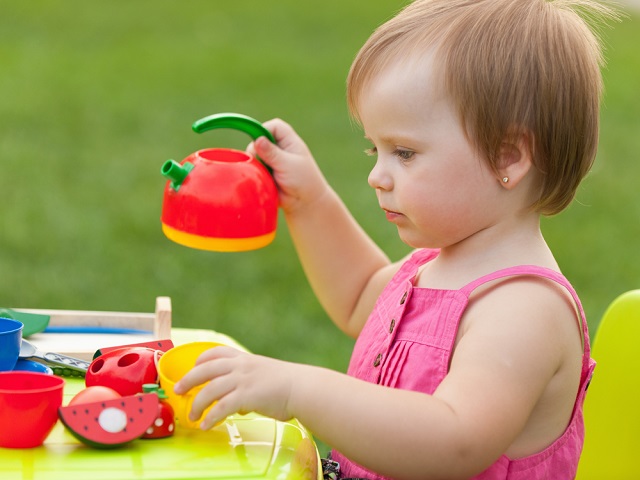Developmental milestones

What to look for in a child’s communication?
Every child develops at a different pace. Please use this information as an approximate guide only and consult your doctor or a Speech Pathologist if you have concerns.
Interaction – Social & Play skills
First 12 months:
- Interested in people & people games (e.g. peek-a-boo, tickles)
- Pulls and bangs toys
- Protests when desired objects are removed
- Shows delight when you reply to them
- Responds to their name
12-24 months:
- Asks for help (verbal and non-verbal)
- Requests desired objects by pointing, vocalisations or single words
- Enjoys putting small objects in and out of containers
- Emerging pretend play (e.g. drinks from a toy cup)
24-36 months:
- Parallel play
- Plays meaningfully with toys (e.g. doll house, tea set) acting out daily experiences
- Engages in sequences of play
- Watches other children at play with interest and occasionally joins in briefly
36-48 months
- Pretend play including invented people and dress-ups
- Likes to help adults with domestic activities (e.g. shopping, gardening)
- Understands taking turns as well as sharing
- Listens eagerly to stories and demands favourites over and over
48-60 months
- Shows sense of humour
- Enjoys singing rhymes and jingles
- Enjoys listening to stories and acting them out in detail
- Understands the need for rules and fair play
The child’s ways (How’s) of communicating
First 12 months
- Cries, smiles, uses facial expression, looks, turns their head, makes sounds, reaches, shakes or nods head, points, gestures and vocalises (babbling)
12-24 months:
- Imitates what adults say
- Combines gestures and vocalisation
- Uses sounds that stand for words
- Occasionally or frequently uses single words
- Echolalia may present
24-36 months:
- Combines 2 or more words at a time
- Uses sentences (initially nouns and verbs)
- Begins to use pronouns (e.g. I, you, me)
- Uses negation words (e.g. no, don’t)
- Begins asking questions beginning “What?”, “Where?” and “Who?”
36-48 months
- Uses 3 - 4 or more words in phrases/sentences
- Begins asking questions beginning “Why?”, “When?” and “How?”
- Exhibits multiple grammatical errors
- Listens and tells long stories
48-60 months
- Speaks fluently except some phonetic confusions
- Defines concrete nouns by use
- Constantly asks for meanings of abstract words
The child’s reasons (Why’s) of communicating
First 12 months
- Protests, requests actions & objects, seeks attention, expresses feelings & interest
12-24 months
- Shows something they are interested in
- Imitates adult
- Greets or says good-bye
- Follows directions
24 months onwards
- Labels or describes objects and people
- Answers questions
- Tells someone about what they are interested in
- Asks questions
Understanding
First 12 months
- Recognises gestures and a few common words (e.g. up, bye)
- Anticipates steps in daily routines
12-24 months
- Follows simple directions (e.g. “Give it to me.”, “Throw the ball.”)
- Points to some body parts
- Understands “No” & “What” questions
- Identifies familiar objects and hands them to adults when requested
24-36 months
- Follows 2 part directions (e.g. “Get the book and put it on the table”.)
- Understands “Where”, “Who” and “Whose” questions
- Understands some prepositions (e.g. “in”, “on”, “under”)
36-48 months
- Understands “Why” and “How” questions
- Understands use of objects (e.g. “What do you use to drink water?”)
- Understands descriptive concepts (e.g. big, wet)
48-60 months
- Understands “When” questions
- Understands long and complex sentences
- Understands conjunctions, e.g. “so”, “because” and “if”
References:
Paul, R. (2001). Language Disorders from Infancy through Adolescence: Assessment and Intervention (2nd Ed.). St Louis, Missouri: Mosby, Inc.
Sheridan, M. D. (1997). From Birth to Five Years: Children’s Developmental Progress. London: Routledge Ltd.
Paul, R. (2001). Language Disorders from Infancy through Adolescence: Assessment and Intervention (2nd Ed.). St Louis, Missouri: Mosby, Inc.
Sheridan, M. D. (1997). From Birth to Five Years: Children’s Developmental Progress. London: Routledge Ltd.